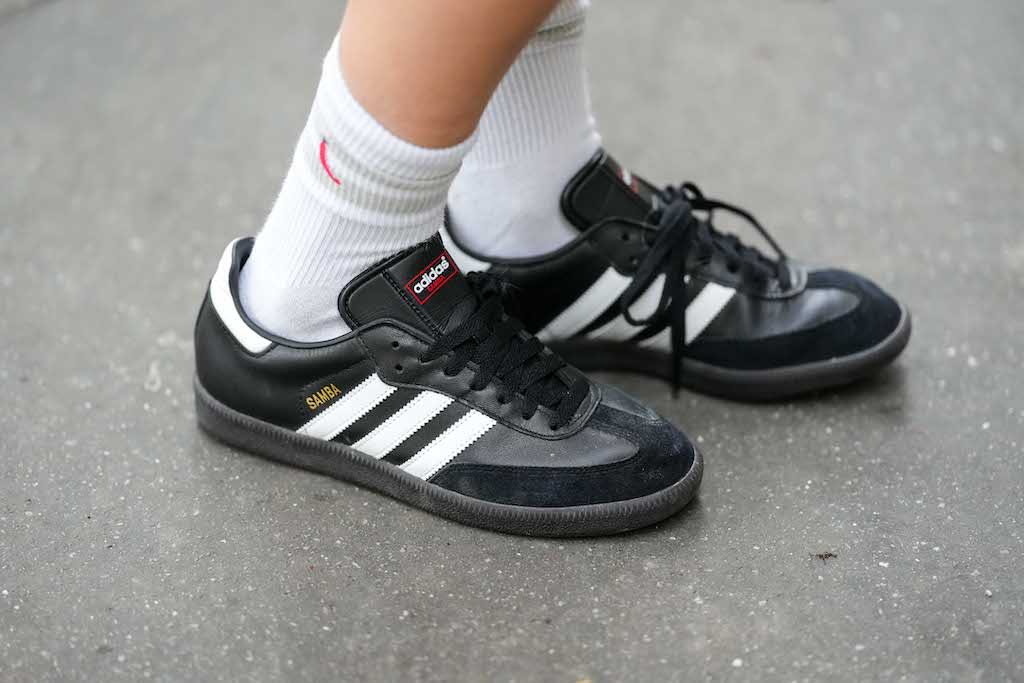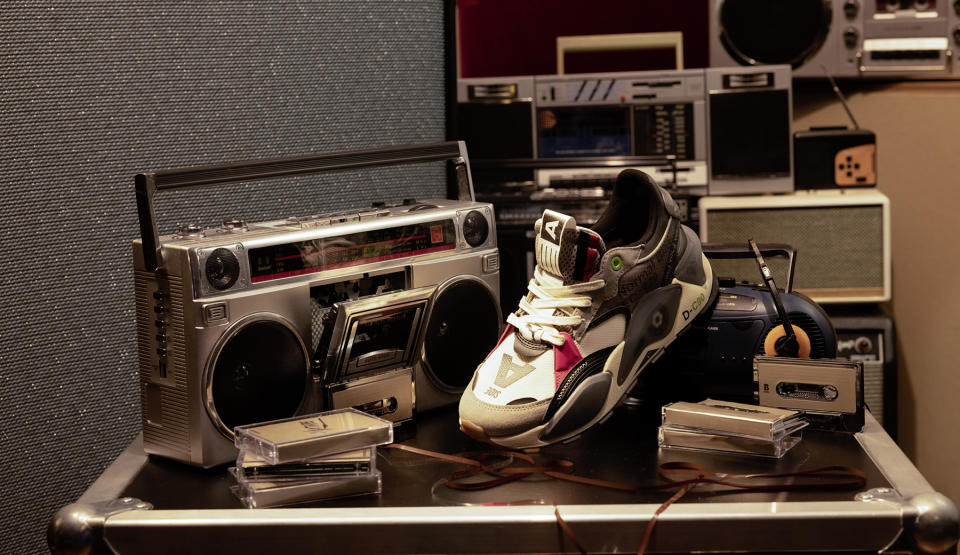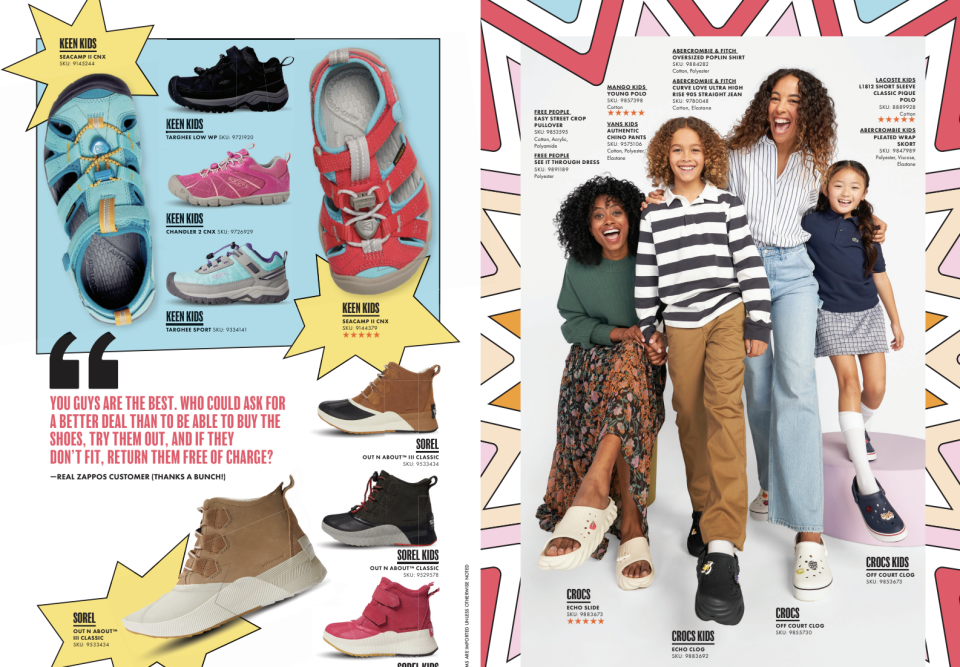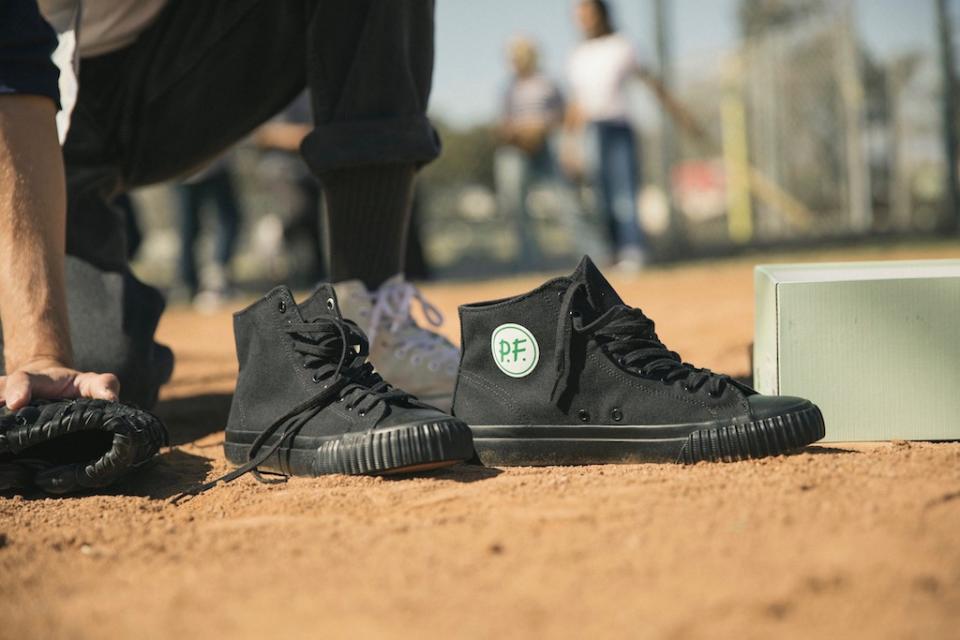It’s Not Your Imagination — Retro Styles Are Everywhere

As the retail market rapidly shifts, footwear consumers are responding to all-things old school: retro shoe styles, analog marketing campaigns and throwback designs from a simpler time.
At Adidas, for example, the sportswear maker is grappling with the loss of its Yeezy business amid a generally bloated athletic market. But amid these issues, the brand has managed to find a powerful avenue for growth from an interest in old-school retro styles.
More from Footwear News
The Samba, in particular, has become a fashion mainstay for celebrities and the fashion-forward in recent months, with searches recently up 1,325% year-over-year on Depop, the peer-to-peer social e-commerce company.
“Certain ’90’s retro styles such as the Samba, Gazelle and Campus have been gaining momentum,” Wedbush analyst Tom Nikic wrote about Adidas in a May note to investors. “They’re generating significant buzz on social media, they’re among the best-selling styles on Adidas.com.”
Adidas is not the only brand benefiting from an interest in retro classics to drive sales and profits. Recently, a consumer interest in nostalgia-fueled products and marketing campaigns has led to more brands leaning into these throwback styles in a meaningful way. Forever 21, a Gen Z-focused retailer owned by Authentic Brands Group via its SPARC venture, recently ran a campaign highlighting fashion trends from the early aughts via a collaboration with Juicy Couture (also an Authentic brand) and featuring Gen Z TikToker Alix Earle on its face.
“Partnering with brands that have multi-generational legs presents an opportunity for Forever 21 to speak to a broad demographic and offer on-trend and affordable fashion to shoppers of all ages,” Forever 21 CEO Winnie Park told FN in a statement.
At Nike, retro styles are core to its brand DNA, especially for Jordan Brand and Converse. In July, Nike utilized the nostalgia of the Powerpuff Girls cartoon with a new Dunk collaboration set to drop during the holidays. That same month, Puma launched its nostalgic “Mixtape” collection in honor of the 50th anniversary of hip-hop, which celebrates the medium people used for compiling songs between the 80s and 90s. Outside of footwear, this summer featured major nostalgia-driven successes for brands like McDonald’s with its throwback Grimace campaign and for Mattel with its “Barbie” movie box office hit.

“The pandemic and now economic challenges have caused a lot of dislocation and nostalgia is something of an anchor,” said Neil Saunders, GlobalData’s managing director of retail, explaining the recent success of nostalgia-driven products. “There can be a lot of negative feelings about the present and nostalgic products are a little relief to that.”
The power of nostalgic marketing
Nostalgic callbacks are also making their way into marketing. Various creators on social media have recently garnered significant followings by focusing on nostalgic content, explained Mae Karwowski, founder and CEO of influencer marketing firm Obviously. This, in turn, has led brands with a throwback bent to find a new potential avenue to showcase their products to a fitting audience.
“I think brands are paying attention because it’s just wholesome, fun content. And it’s a different way to highlight your brand and show that your brand has real longevity and heritage,” Karwowski said of these new content creators. “I think [they] do a lot of things that brand marketers are thinking about, and these creators aren’t necessarily thinking about it the same way, but it fits really well.”
On the brand side, online shoe retailer Zappos rolled out a ’90s-style physical catalog in mid-July to about 700,000 customers who typically purchase shoes for kids. The catalog was designed to pull on the heartstrings of parents who likely remember growing up in a simpler time before e-commerce reigned supreme, when shopping from catalogs was the norm and an exciting part of the back-to-school experience.

Zappos’ chief merchandising and marketing officer Joe Cano told FN in an interview that the online shoe retailer had noticed an uptick in interest for nostalgic campaigns and products across retail in recent months.
The shoe retailer has also utilized nostalgia for other campaigns in the past as well. For its 20th anniversary in 2019, Zappos turned its website back to what it looked like when it launched in 1999 for one day. For next year, Zappos plans to launch a similar series of nostalgia-focused campaigns for its 25th anniversary and is currently in talks with vendors to highlight and bring back shoes that were popular in the 1990s.
“Some of this nostalgia, as you’re seeing across the board, I think it’s resonating not only with parents, but with kids,” said Cano. “If you look at the current trends right now, they’re very much coming back to that ’90s nostalgia, which plays in perfectly with what this catalog represents.”
Old School for the Modern Consumer
But when it comes to using nostalgic designs or mediums in the 21st century, brands need to implement newness as well. For example, Zappos’ catalogs included QR codes for people to be able to quickly make their way to the Zappos website. Because while people might love the look and feel of something from the past, they generally appreciate the ease of modern innovations.
This blend of old and new is something that heritage brand PF Flyers has had to balance amid its relaunch in 2021. Kassia Davis, the daughter of New Balance chairman and majority owner Jim Davis, acquired the brand from New Balance in 2021 and has since managed to achieve sales on par with its best year under New Balance. A large part of this success has been driven by a recent surge in interest for nostalgic brands. The more than 80-year-old shoe brand was centrally featured on the feet of a lead character in the 1993 hit baseball film “The Sandlot.”

“Footwear can really take consumers back to a positive childhood experience or an obsession for the game that they once had,” Davis said, explaining how PF Flyers continues to lean into its heritage Sandlot silhouette to pull on the heartstrings of its older consumers.
But the footwear brand also knows it needs to innovate to win over younger consumers and see long-term results. To make these changes while staying true to its heritage, Davis has focused on “subtle updates,” such as using more sustainable materials, different colors and a recycled memory foam footbed.
The changes thus far have kept demand in a positive trajectory. Davis projects revenues to double next year compared to the current year, and for sales to be up 45 percent in 2025 and up 55 percent in 2026.
“[They’re] added elements that improve the quality of the product,” she said of the new changes to the shoes. “But we are not changing it too much so the consumer doesn’t recognize it and is turned off.”
Best of Footwear News
Sign up for FN's Newsletter. For the latest news, follow us on Facebook, Twitter, and Instagram.

